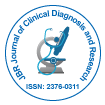Research Article
Resistance Phenotypes of Bacterial Strains Responsible for Urinary Infections and Bacteraemia among Febrile Children with Sickle Cell Anaemia in Mali
Baraika MAG1,2, GuindoA1, Sadio Sarro YD1, Karim Dembele A1, Ali Toure B1, Traoré I1, Kene S1, Traore Y1, Kanta M1, Tessougue O1, Guindo P1, Diallo S3, Lekana-Douki JB4,6 and Diallo DA1,5*1Centre for Research and Control of Sickle Cell Disease Bamako, Mali
2Regional Doctoral Schools in Tropical Infectiology, Franceville, Gabon
3Center of Infectiology, Charles Merieux of Bamako, Mali
4Unit of Evolution Epidemiology and Parasitic Resistances, Center International de Researches Medicals de Franceville, Franceville, Gabon
5Point G University Hospital, Department of Medical Hemato-Oncology, Bamako, Mali
6Department of Parasitology-Mycology Tropical Medicines, Faculty of Medicine, University of Health Sciences, Libreville, Gabon
- *Corresponding Author:
- Dapa Aly Diallo
Department of Hematology, University of Sciences
Techniques and Technologies of Bamako, Bamako, Mali
Tel: (00223) 2022 38 98
Fax: (00223) 20 22 38 99
E-mail: dadiallo@icermali.org
Received date: December 12, 2016; Accepted date: January 05, 2017; Published date: January 09, 2017
Citation: Baraika MAG, GuindoA, Sadio Sarro YD, Karim Dembele A, Ali Toure B, et al. (2017) Resistance Phenotypes of Bacterial Strains Responsible for Urinary Infections and Bacteraemia among Febrile Children with Sickle Cell Anaemia in Mali. J Clin Diagn Res 5:132. doi:10.4172/2376-0311.1000132
Copyright: © 2017 Baraika MAG, et al. This is an open-access article distributed under the terms of the Creative Commons Attribution License, which permits unrestricted use, distribution, and reproduction in any medium, provided the original author and source are credited.
Abstract
The broad-spectrum empiric antibiotic therapy recommended for sickle-cell fever can help to develop bacterial resistance. The purpose of this study is to explore and describe resistance phenotypes of isolated bacterial strains of urinary infections and bacteraemia among febrile children with sickle-cell anaemia. From April 2014 to March 2016, we collected 25 bacterial strains from febrile sickle-cell patients aged 6 months to 15 years. The strain was identified by a conventional standard procedure which includes morphological study, culture and biochemical characteristics of the strain followed by an automated method. Twenty-five (25) bacterial strains were isolated in 25 sickle cell children, comprising 17 SS, 3 SC and 5 S-thalassemia strains. These bacterial strains were isolated in urine (23/25 or 92%) and blood cultures. E. coli, Klebsiella pneumoniae, Enterobacter spp., Serratia ficaria, Raoultella ornithinolytica, Pantoea spp. and Salmonella spp were isolated from urine and blood cultures respectively. All these isolated strains were Enterobacteria, with 56% (14/25) E. coli, 16% (4/25) Klebsiella pneumoniae, 8% (2/25) Salmonella group, 8% (2/25) Enterobacter spp, 4% (1/25) Serratia ficaria, 4% (1/25) Raoultella ornithinolytica, and 4% (1/25) Pantoea spp. More than half of the strains were isolated in female patients (19/25). The antibiogram revealed ESBL-producing strains (28% of 7/25) and Cephalosporinasis (8% or 2/25). The isolated strains showed 4% (1/25) resistance to all the aminoglycosides tested, whereas all the strains isolated from the blood cultures showed a wild phenotype. Resistance to quinolones associated with alteration of gyrA and parC genes was 4% (1/25) for all strains isolated from the blood and urine cultures. The resistance phenotypes of bacterial strains found in our study are variable. This study suggests that we should give more priority to other empirical antibiotherapies that use the molecules of the aminoglycosides and quinolones family for sickle cell children in our context than to those recommended elsewhere.
